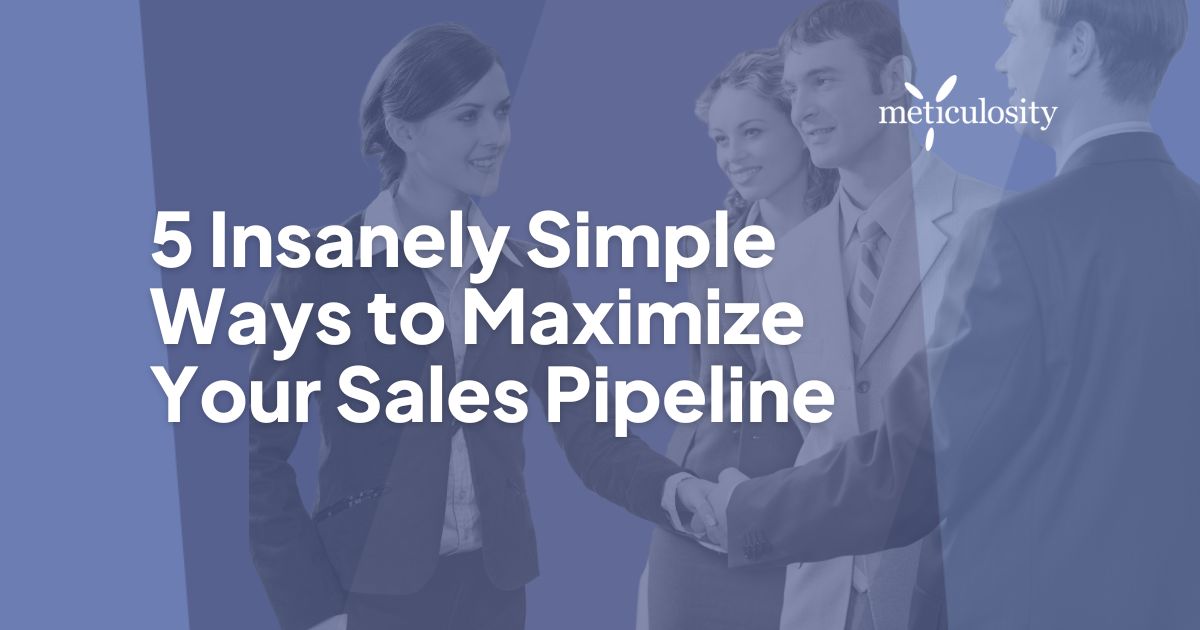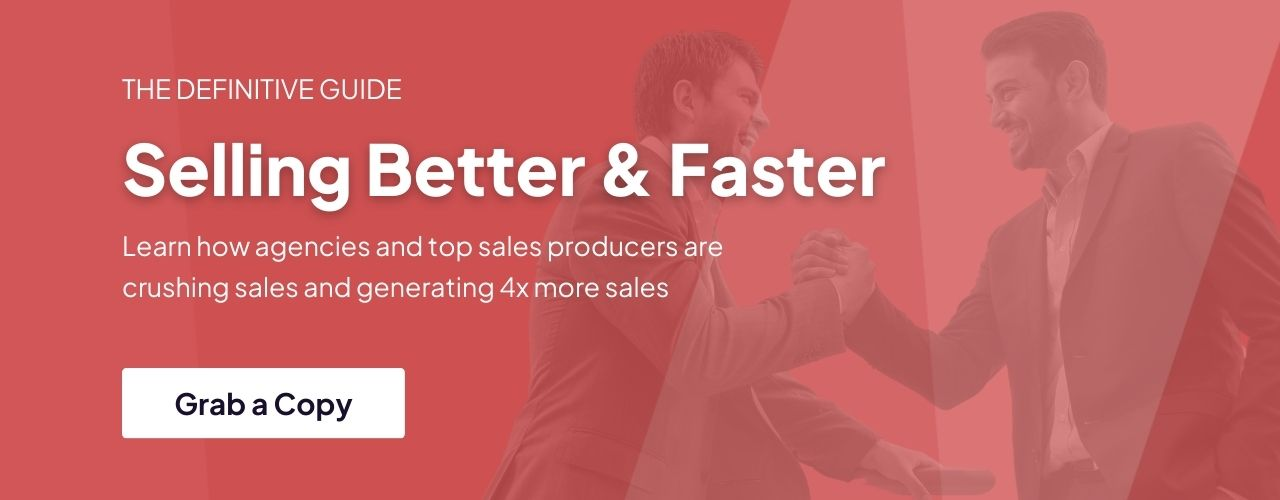Every sales strategy should include activities to maximize your sales pipeline and bring positive results to your business.
We typically create the pipeline with a CRM tool to manage leads and engagement activities. You'd design your sales pipeline automation to provide prospects with a clear path through the buying process.
What is a Sales Pipeline?
A sales pipeline is the visual representation in a CRM showing where a sales prospect is in the buying process. The pipeline typically has stages that reflect your unique buyer's journey.
Sales Pipeline Activities
While you can include many components when creating your sales pipeline, these five essential elements can serve as the foundation for a successful campaign. Each component of your sales pipeline will work to foster conversions and bring your brand’s message to as many prospects as possible.
In this article, we’ll show you how to develop automated sales emails that boost engagement with your leads. We’ll also provide sales pipeline examples and reveal how sales automation can help you engage prospects and boost revenue.
You can also take the super slick HubSpot CRM for a test drive since it's free forever.
1. Tracking Sales Opportunities
Many sales pipeline management software programs use opportunity records to track prospects’ progress. Opportunity records provide two important pieces of information. These records give sales reps a comprehensive view of where the lead is in the sales pipeline.
Opportunity records also help sales reps develop a follow-up message for the lead. These records track the time and date that the next action should occur then allows the sales representative to prioritize leads according to how recently they made contact.
2. Taking Advantage of the Sales Pipeline Stages
Effective sales automation strategies occur in stages. These stages allow leads to navigate the process easily . No matter what kind of business you have, each sales rep should be able to determine how likely a lead is to make a purchase. Ultimately, the qualification process takes place over three sales pipeline stages:
- Contacting: A lead in this stage is considered a new prospect.
- Engaging: After establishing a dialogue with the lead, the rep will continue to determine whether he or she is qualified to purchase the product.
- Qualified: In this final stage, the sales rep decides that the lead should move to the next stage in the sales pipeline.
With email automation, the lead would receive a personalized message after moving to the next stage in the sales qualification process. Remember, email automation should be used as a supplement to the contact you’re already making with the prospect.
3. Composing Emails for the Sales Process
When crafting email messages for your sales automation strategy, consider the lead’s past and future communications with your business. Messages should reflect the stage the prospect is currently in – for example, a lead who’s just in the Contacting stage shouldn’t receive messages that are tailored to those who have passed the Qualifying stage.
NOTE: Your automated email strategy should be a supplement to the regular contact you make with the prospect.
Before writing a sales automation email, ask yourself:
- Which sales stage is triggering this email?
- When should this email be sent?
- What previous communication has the lead received by the time this email is sent?
Write these emails in a friendly, conversational tone that avoids flowery language. Additionally, the emails need to be sent from the sales rep and should appear personal, not automated.
4. Reaching Customers with Automated Emails
During the Contacting stage of the sales process, the sales rep is simply trying to get in touch with the prospect through automated emails.
These messages should address the fact the rep has been trying to reach the lead over the phone but hasn’t received a response. Provided that name and date fields are personalized then all leads can receive the same messages.
Some specific automated messages might look like:
- ”I just tried to call.”: Send this email when you’ve attempted to get in touch via phone, but were unsuccessful. Provide your contact information and a friendly message encouraging the prospect to get in touch.
- ”I can’t seem to reach you.”: Send this message to an unresponsive lead on a weekday morning, one week from the first automated message. Using a greeting like “Good Morning” can give the message a timely, personal feel.
- ”Should I stop contacting you?”: This message should arrive on a weekday afternoon, two weeks after the lead was first contacted. At this point, you should pull away from the lead, since those who have not engaged after this long rarely progress in the sales process.
So, personalize every email you send. People respond well to messages with a bit of human touch.
5. Automate Your Sales Pipeline to Start New Relationships
Effective sales pipeline management can help your representatives build lasting relationships with customers.
Sales automation also helps reps keep track of leads saving valuable time when implementing sales techniques. Managers will be able to analyze valuable data that can help them improve their company’s sales process.
Sales Pipeline Conversion
No matter what product or service your business provides, the goal of the sales pipeline remains the same: conversion. You have to find a way to lead people down the pipeline and turn them into satisfied customers.
An effective sales pipeline can even turn complete strangers of your organization into leads, then into a customer and finally into passionate advocates for your brand.
Powerful tools like blogs and social media can help audience outreach immensely.
/Imported_Blog_Media/buyers-journey-750x426-Jun-28-2021-11-05-57-83-PM.png?width=750&height=426&name=buyers-journey-750x426-Jun-28-2021-11-05-57-83-PM.png)
Every brand’s approach to creating a sales pipeline is different, though it should contain distinct phases. You can represent these phases across the Buyer's Journey: Awareness, Consideration, and Decision.
Here are five components that will help your prospects progress through the sales pipeline:
1. Blogging
One of the best ways to attract leads and customers is to have them visit your website. To do this, you must increase engagement by creating content that draws interest to your brand and shows customers that your brand is reliable and trustworthy.
Blogging is an excellent tool for fostering relationships with potential customers. Blogs can help draw visitors to your site in many ways, including:
- Writing blog posts: When you publish a post, it updates your sitemap.xml file which updates the search engine index. The more posts you publish, the more search signals you're sending and increasing the likelihood your site will appear on a search engine results page.
- Increasing your online presence: When you share your blog posts on social media, it expands your online presence while also drawing new visitors to your website. An effective marketing strategy involves your blog and social media accounts working together to help each other grow.
2. Social Media
A successful sales pipeline will include social media marketing. Publishing content like blog posts, infographics, and videos can expand your online presence and help you extend your content to new audiences.
Social media also allows you to interact with customers and industry professionals by sharing and commenting on their posts. The more active your social media accounts are, the more popular your website will become.
3. Gated Content
Located through all stages of the pipeline, gated content can convert your site’s visitors into leads or advance them with additional engagement.
Gated content includes:
- ebooks
- white papers
- tip sheets
- ultimate guides
- or any other downloadable content
Visitors can receive this content by providing some personal information or signing up for your email list. However, it’s important to make sure you don’t ask for too much information, which can make many customers uncomfortable.
Creating a landing page for your gated content is important for lead generation and a “Subscribe” mechanism for your blog.
4. Thank You Page
Including a Thank You page can be a great way to nurture your relationships with visitors after they’ve received the gated content. A well-crafted Thank You page can:
- Upsell and cross-promote: If the user downloaded your free offer, you can assume that he or she is interested in doing business with your company. The Thank You page presents a great opportunity to recommend other products or services that the user would be interested in.
- Increase subscribers: Including a newsletter sign-up field or “Create an Account” link on your Thank You page can encourage the user to further interact with your business. Adding a “Subscribe” link to your blog can also increase engagement and draw traffic to your page.
- Show appreciation: The goal of the Thank You page is to show customers that you value their business. This is a great place to include a coupon or discount for future services, which will encourage the customer to return to your site.
5. Email
Email allows you to build stronger relationships with your potential customers. It’s important to follow-up with customers to ensure they had a great experience with your product or service. Engaging emails also can convert leads and turn existing customers into brand advocates.
Ultimately, the goal of email marketing is to make your business the natural choice when a customer is looking for help with a problem. However, quality over quantity is key when it comes to email - it’s important not to clutter customers’ inboxes with countless emails.
Be sure that each message you send provides your leads with something of value.
Over to you
Most of all, sales automation allows your business to cultivate relationships with prospects, therefore increasing conversions and revenue. Sales automation can help generate more sales with less hassle for employees – a winning combination.







